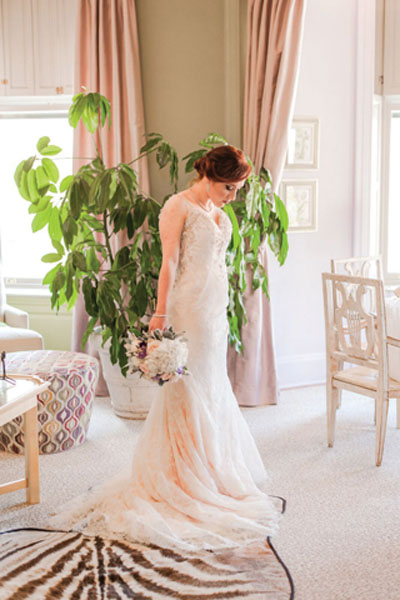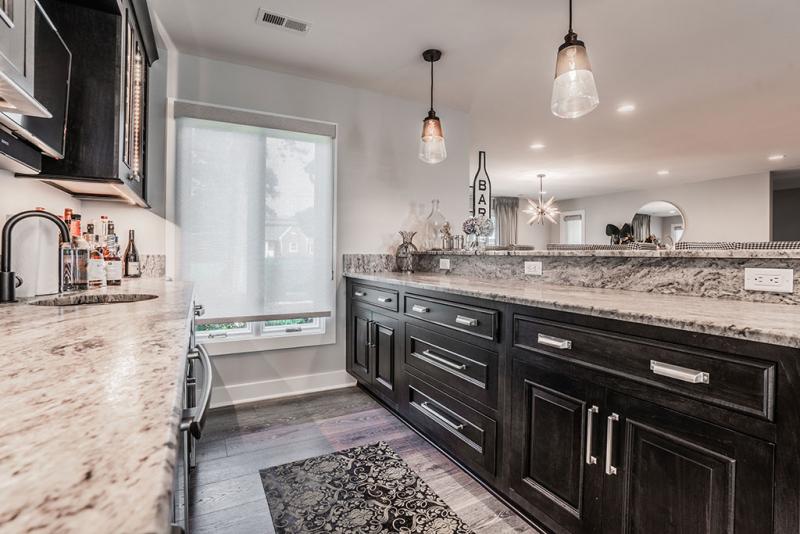Homeowners may love the bright red paint in their bathroom and that awkward corner in the kitchen where they throw all their everyday items, such as backpacks, shoes and briefcases. They overlook the weeds in their landscaping, the dog fur on the carpet and the chipped, sun-faded paint on the shutters. But, if their house is on the market, a buyer will microscope in on all these imperfections.
When it comes time to put out the ‘For Sale’ sign, many area realtors will help homeowners stage their homes to highlight attributes and downplay shortcomings, whether the sellers are living there or the property is vacant.
“When you stage your house, it attracts more potential buyers,” says Kippy Day, a home marketing consultant for the Creig Northrop Team. “Most buyers shop for homes online these days so the visual presentation of your home has to be 100 percent, if not 1,000 percent. … It can bring you a higher sales price and a contract normally quicker than if you don’t stage a home.”
Real estate broker Jaronda Perry of the Perry Davis Group at Keller Williams Realty says the goal of staging is to make potential buyers go “Ahhhhh” upon surveying the property. Vacant properties offer realtors and professional stagers a blank canvas to create a warm, inviting potential home.
Buyers “need to imagine themselves living there and it is very difficult for people to do that with a vacant property,” she says. “They need to have an idea of where their furniture would go and just be able to imagine themselves in the space, and staging does that really effectively.”
For those who are still living in their home during a sale, staging can enhance the atmosphere. “The way you live every day is a little bit different from the way that you present your home for sale,” says Mary Livengood, director of brand communications for the Creig Northrop Team.
Many realtors will tell sellers to declutter your house and even remove some of the furniture. “Pack up everything, step back and then pack up more,” says Kate Barnhart, Keller Williams Realty real estate agent. “You want the room(s) to feel open.” For example, personal photos also need to be taken down to minimize personality and maximize space, she adds.
“You have to remember you are staging for the camera first and foremost,” Barnhart says. “The photos (of your home) are often what get somebody into your house. If your photos aren’t spacious and inviting looking, some people will avoid your listing all together.”
The property’s color palette also needs to be in neutral tones like gray, tan and beige. Barnhart also encourages property owners to make sure all the spaces in their house have a purpose. “If you have a weird room or a landing that you made into a junk corner, you want to make sure it doesn’t exist,” she says. “You have to give it a purpose, be it a bench and a place to put your shoes or be it a reading nook. Having useful space throughout the house is very important.”
But homeowners shouldn’t focus solely on the inside. “Curb appeal is your first impression,” Day says. “Aside from (potential buyers) looking at (your home) online, when they physically pull up in front of that property, your curb appeal should be on point.” Realtors suggest a fresh coat of paint on the exterior and landscaping touches like flowers and fresh mulch; vinyl siding should be power washed.
“If it doesn’t look good outside,” Day says, “most buyers are going to think it doesn’t look good inside.”
Decluttering can be challenging because clients don’t like to remove things with attachments to their lives, Days admits. “People have to be able to detach themselves from their home and really look at it as a property and not their house anymore,” she says.
Realtor Eileen Bumba of Long and Foster encourages homeowners considering selling to contact an agent to help with staging. “There are agents out there that are more aware of what your home should look like,” she says. Buyers need to find somebody who “is going to take the time to address issues with home. You will get more bang for your buck.”
The earlier sellers contact an agent, the better. “I love it when people call me six months before they are ready to sell and say ‘What should I be doing?’ because then they are going to be doing the right things and they are not going to be wasting their money,” Barnhart says.
After meeting with clients for consultations, Day enjoys seeing the transformation from the initial meeting to when photographs are set to be taken of the property. “When we put (the house) on the market and it goes under contract in a couple of days, it really makes you feel good,” she says.





